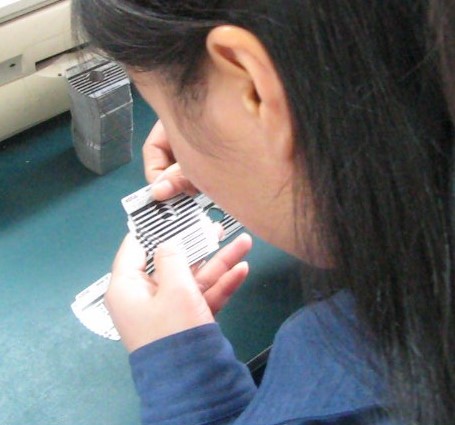 |
| Visually intense work |
Principles affected
Related pages
Workstations:
Background
Magnifiers are common in manufacturing to enhance visibility. However, some technologies and devices that are not widely known can be used in many more situations.
A related issue when magnifiers are used is that additional work aids may be needed, such as arm supports or fixtures.
Ideas and Options
Basic magnifiers
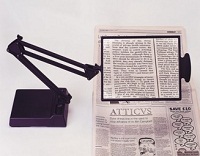 |
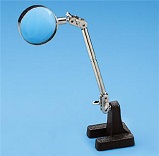 |
| Inexpensive, low power magnifiers supported with articulated arms | |
There are many styles of low cost magnifiers that can be used in industrial applications. Often these devices are marketed for personal use to enable people with poor vision to read.
The lower magnification provides greater depth of field, i.e., less need to be at a precise distance to see the magnified image .
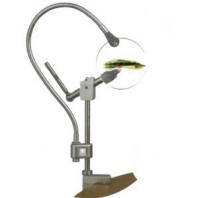 |
| Magnifier and fixture for tying fishing flieswww.wapsifly.com |
Sports and hobby supply outlets have off-the-shelf devices that can be used for many light assembly and inspections operations
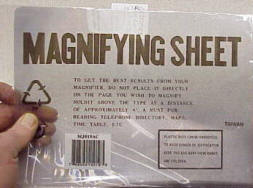 |
 |
| Magnifying sheet placed slightly above paper | Around neck magnifier |
Magnifying sheets can be placed over hardcopy to increase visibility, for example, when reading blueprints or when entering data into a computer. Around-the-neck magnifiers provide an alternative to bench-mounted devices. Advantages include portability and reduction of bench clutter. A disadvantage is that they can create a risk for excessively bent necks in some situations, unless modified with longer chest extension.
Lighted magnifiers
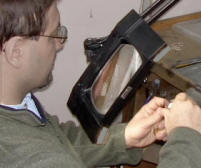 |
 |
| Light magnifier in vertical orientation | www.eschenbach.com |
Magnifiers that are combined with task lighting are common and readily available. Some brands and models are more compact and maneuverable than others. The Eschenbach model shown above right has an especially large lens and thin frame. Magnification is multiplied when one magnifier is placed over another. This version has a second lens on a hinge that can be flipped down for increased magnification (and less viewing area).
 |
| Mantis (www.visioneng.com) |
Stereoscopic magnifiers are also available. Some models are “eyepieceless,” which allows greater head movement and consequently less fatigue.
Video magnification
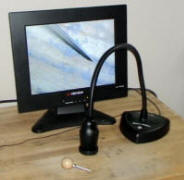 |
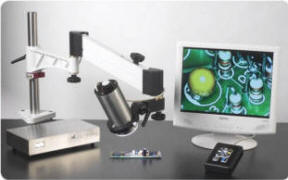 |
| www.ken-a-vision.com | www.visiontechnologyinc.com |
The most significant improvement in magnification in recent years has been video magnification. Costs have dropped dramatically (as with video cameras and monitors generally) and video technology is now feasible in many situations. There are several important advantages:
- Greater mobility and less employee fatigue, since it is possible to view the screen from different locations and not be not locked into single position as with a normal microscope
- More than one person can look at an image at the same time
- Can capture a frame for documentation, e.g. for quality control
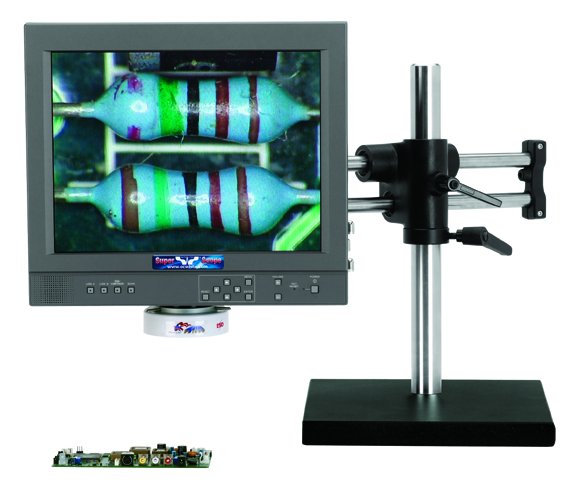 |
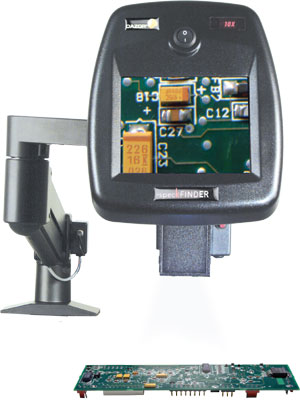 |
| www.ocwhite.com | www.speckfinder.com |
There are multiple on-line vendors and a wide array of styles, such as units that integrate the camera with the monitor.
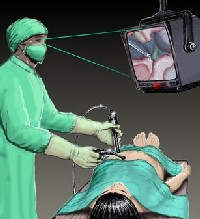 |
| Video magnification for surgery |
For some tasks, the switch to video magnification may require a period of retraining, since the employee now looks in a direction different from the location of the hands. Perhaps the best example is video-assisted surgery.
Loupes
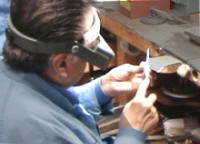 |
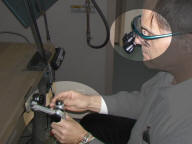 |
| Traditional jeweler’s loupes | Long distance (surgeon’s loupes) |
Loupes (binocular magnifying eye glasses) have long been used by jewelers and health professionals, but could potentially be used in a wide variety of other workplace applications. Working distance is usually 6-10 in., which requires a fixture at almost head level in order to prevent working with a bent neck. Long distance loupes (surgeon’s loupes) are available with working distances of 1-2 ft., but have corresponding less depth of field.
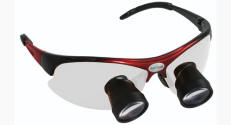 |
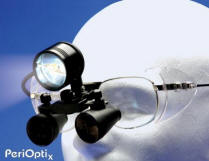 |
| Sports frame (www.sheervision.com) | LED light attachment (www.perioptix.com) |
